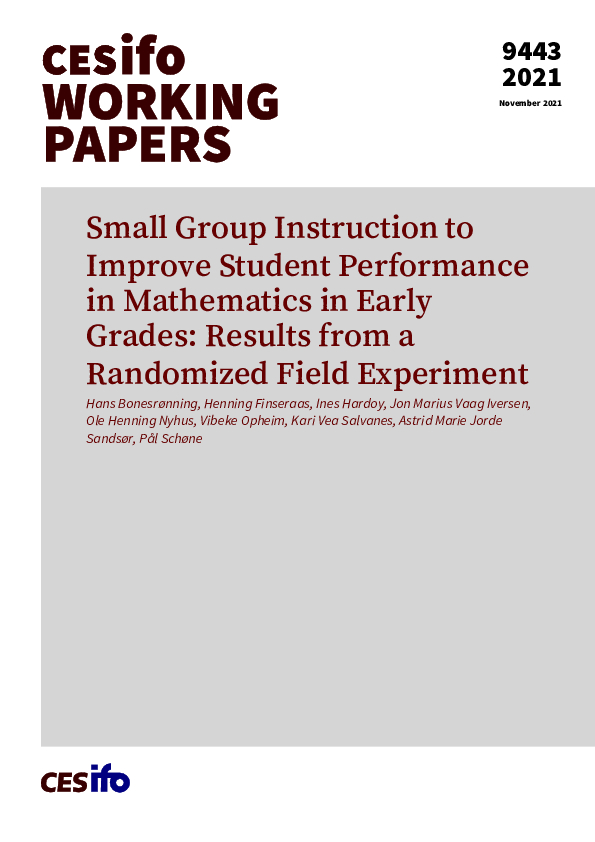Small Group Instruction to Improve Student Performance in Mathematics in Early Grades: Results from a Randomized Field Experiment
CESifo, Munich, 2021
CESifo Working Paper No. 9443

We report results from a large-scale, pre-registered randomized field experiment in 159 Norwegian schools over four years. The intervention includes students aged 7-9 and consists of pulling students from their regular mathematics classes into small, homogenous groups for mathematics instruction for 3 to 4 hours per week, for two periods of 4-6 weeks per school year. All students, not only struggling students, are pulled out. We find that students in treatment schools increased their performance in mathematics by .16 standard deviations at the end of the school year and by .06 standard deviations in national tests 1-2 years later, with no differential effect by pre-ability level or gender. Our study is particularly relevant for policy-makers seeking to use additional teaching resources to target a heterogeneous student population efficiently.
Public Finance
Economics of Education